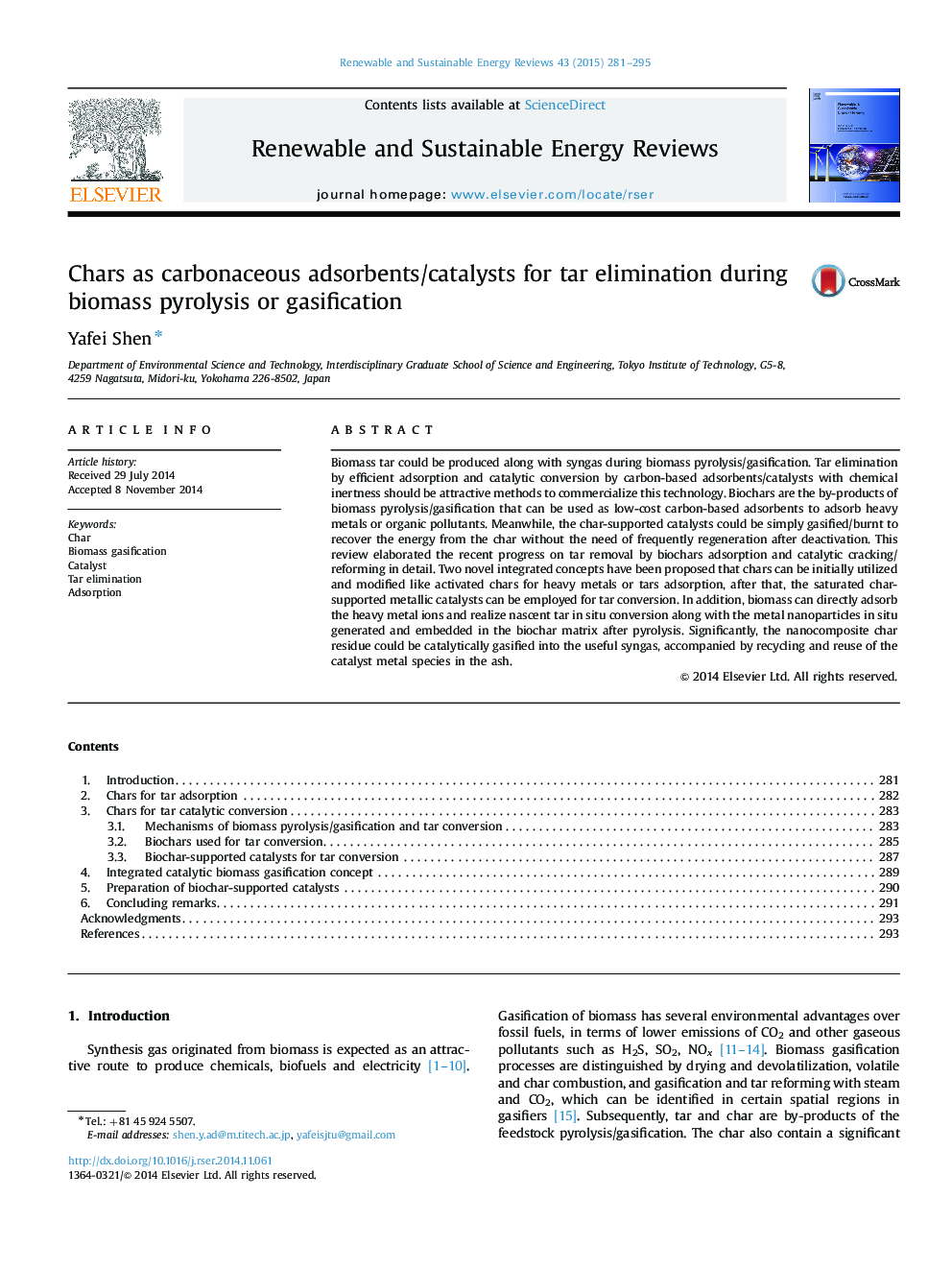| Article ID | Journal | Published Year | Pages | File Type |
|---|---|---|---|---|
| 8117573 | Renewable and Sustainable Energy Reviews | 2015 | 15 Pages |
Abstract
Biomass tar could be produced along with syngas during biomass pyrolysis/gasification. Tar elimination by efficient adsorption and catalytic conversion by carbon-based adsorbents/catalysts with chemical inertness should be attractive methods to commercialize this technology. Biochars are the by-products of biomass pyrolysis/gasification that can be used as low-cost carbon-based adsorbents to adsorb heavy metals or organic pollutants. Meanwhile, the char-supported catalysts could be simply gasified/burnt to recover the energy from the char without the need of frequently regeneration after deactivation. This review elaborated the recent progress on tar removal by biochars adsorption and catalytic cracking/reforming in detail. Two novel integrated concepts have been proposed that chars can be initially utilized and modified like activated chars for heavy metals or tars adsorption, after that, the saturated char-supported metallic catalysts can be employed for tar conversion. In addition, biomass can directly adsorb the heavy metal ions and realize nascent tar in situ conversion along with the metal nanoparticles in situ generated and embedded in the biochar matrix after pyrolysis. Significantly, the nanocomposite char residue could be catalytically gasified into the useful syngas, accompanied by recycling and reuse of the catalyst metal species in the ash.
Related Topics
Physical Sciences and Engineering
Energy
Renewable Energy, Sustainability and the Environment
Authors
Yafei Shen,
